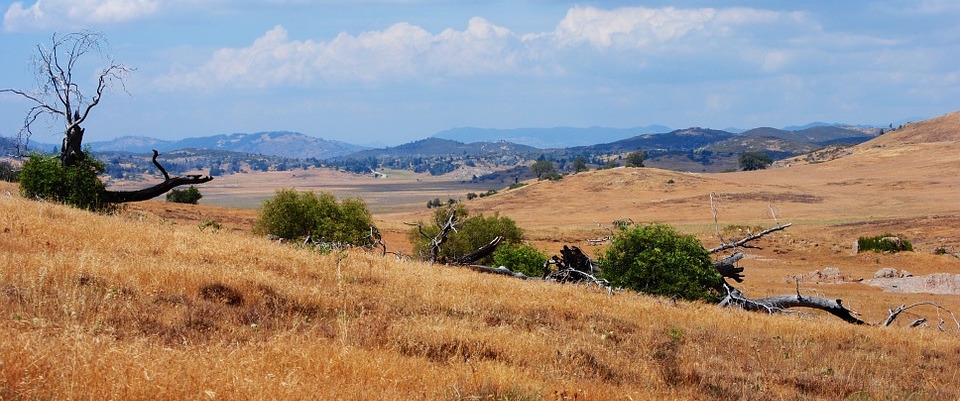As the drought deepens and associated angst spikes, a variety of solutions have been bruited about our parched state: New reservoirs. Rigorous (even draconian) conservation. Recycling. Hauling icebergs from Alaska. Fervent prayer.
And marine desalinization.
“Desal,” of course, is nothing new. Over the past 30 years, the notion of processing salty sea water into usable, drinkable “fresh” water has been both hailed as the ultimate solution for the Golden State’s water woes and condemned as pie-in-the-sky fantasy, a prohibitively expensive and ultimately insufficient response to any prolonged supply crisis. So what’s the truth? Somewhere between salvation and complete bust, it appears.
First, desalinization is by no means an experimental technology. It is widely used throughout the arid portions of the world, and is living up to (reasonable) expectations.
“Israel now gets about half its drinking water from marine desalinization,” says David Sedlak, the co-director of the Berkeley Water Center, a collaboration of experts on hydrology, resource economics, and water policy and engineering from UC Berkeley and Lawrence Berkeley National Laboratory. “Perth (Australia) also gets half its water from desal. This is no longer a technology just for wealthy Middle East sheikdoms and Caribbean islands with no other option. As more plants are built, companies have found ways to desalinate more water for less energy. It’s becoming viable for an increasing number of places.”
And a drought-ravaged California may just be one of those places, at least to a degree. Yesterday U.S. Sen. Barbara Boxer of California said she would push for millions of federal dollars into research on how to improve desalination technology. Indeed, the state has dabbled with desal since the early 1990s. Marin County had an experimental facility, and small desal plants are now in operation in Monterey and the Santa Cruz Islands. Santa Barbara built a desalinization plant during a drought that lasted from 1986 to 1991. Designed to churn out 3,125 acre-feet of fresh water a year, it operated for four months, then was shuttered when the rains fell in earnest. (An acre-foot is about 325,000 gallons, enough to supply two households annually). Now local officials are considering retrofitting and reactivating the plant.
But those facilities are mere drops in the bucket compared to the massive desalination plant that is scheduled to open in Carlsbad this fall. It’s expected to produce 50 million gallons of water a day. Considering the average American consumes 100 gallons daily, that’s enough water to slake the thirst, flush the toilets and wash the clothes of 500,000 San Diegans.
Even at that production rate, White House science advisor John Holdren recently told the San Francisco Chronicle, it would take some 60 similar plants to meet half of the urban water needs of California. Still, he said, “it could be done.”
Most desalinization plants employ reverse osmosis, a process that involves forcing seawater through special membranes to remove salt and other undesirable compounds. That takes a lot of energy and money. Currently, desalinated water costs about $2,000 an acre-foot, roughly twice the price of water obtained from reservoirs or recycling, and four times the cost of water “produced” through conservation.
Still, that represents a significant improvement from the plants of yesteryear. Today’s plants consume only about a quarter of the electricity of their 1980s counterparts, and membranes are also vastly superior to earlier models.
“The membranes have gotten better over time, and people are also finding ways to recover energy during the desalinization process,” says Sedlak. “Each improvement yields about a 3 to 5 percent gain in efficiency. We’re now at the point where desalinization costs about the same as pumping water over the Tehachapis” using California’s government water projects.
Still, desalinization’s costs aren’t all about dollars and cents. Desal plants can leave a pretty big footprint on the coastal landscape, the intake pipes can suck up larval fish, and there are concerns about disposing of the concentrated brine yielded from reverse osmosis. Too, even with the reduced energy consumption of the newer plants, it still takes a lot of electricity to force millions of gallons of water through osmotic membranes, and that raises carbon emission concerns.
Sedlak says the intake and brine disposal worries largely have been addressed by the newer systems, but that greenhouse gas emissions seem an ineluctable downside of the technology.
“Australia has used solar and wind farms to produce equivalent carbon offsets for the greenhouse gas emissions produced by their desal plants,” Sedlak says, “but there has been no big move here to dramatically ramp up green energy or otherwise institute carbon offsets for our desalinization initiatives. So that remains an issue.”
Bottom line, concludes Sedlak: Desal is good insurance, but it shouldn’t be the default choice.
“Desalinization can make sense for coastal areas, and most of California’s population is in coastal cities,” Sedlak says. “So it’s good to know that if all else fails, we have desal. The cities won’t run out of water. But we also have a very good sense of the economic and environmental consequences. We know that many other options cost much less and have fewer environmental impacts, particularly in regard to greenhouse gas emissions. So we should pursue those first.”



















